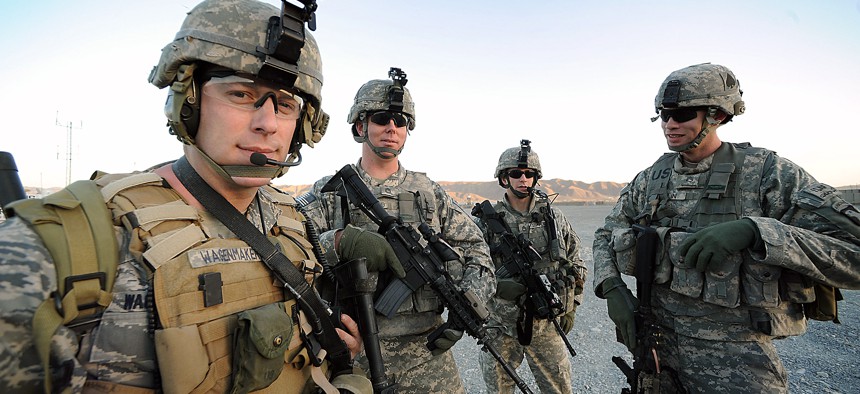
Ground troops join pilots in tracking targets with augmented reality helmet displays
Thales is adapting their augmented reality target tracking technology to be mounted on the helmets of ground operators, as well as aircrew.
Airmen on the ground may soon have access to the same augmented reality technology that delivers real-time situational awareness, target acquisition, and tracking capabilities to crewmembers of the AC-10 Warthog and AC-130 gunship.
For AC-130 aircrew, and soon for ground fighters as well, the Communication-Enabled Networked Tactical Augmented Reality (CENTAuR) system “replaces a five-minute radio conversation with instant visual communication of where the target is,” according to John Beck, Senior Manager for Business Development at Thales Defense & Security Inc., developer of the CENTAuR system.
The system’s tracking capability is also designed to be able to identify friends or foes.
The CENTAuR system is a high-resolution augmented reality display that mounts on the warfighter’s helmet. According to a Thales statement, the full-color augmented reality symbology appears to the operator on top of the actual view through the eye piece. The system is capable of transitioning from daytime to nighttime lighting for 24-hour operation.
The display is developed using lightguide optical element (LOE) waveguide technology, which uses a series of partial reflectors to compound fragments of a virtual image into a micro-display projector “pod,” according to Lumus, industry developer of LOE technology. This virtual image is then overlaid onto the wearer’s transparent display screen on top of the real view.
LOE technology also offers the ability to project 3-D virtual imagery and provide a binocular display, reports a Lumus press release.
With this technology, an acquired target or tracking subject will no longer have to be described over a radio, according to a representative at the Air Force Association’s Annual Conference. Instead, a pre-programmable indicator symbol will designate the target on the helmet displays of the operators, which can then be coordinated and confirmed.
The final challenge for developers before the CENTAuR system is ready to be fielded is coordinating the augmented reality display with the wearer’s head movements.
The version developed for aircrew employs hybrid optical-inertial tracker technology, using wireless overhead sensors in the cockpit as reference points for the wearer’s head motions. However, there is no opportunity for an overhead reference point for ground fighters.
“Most of the commercial applications are focused on putting a display in front of the eye, not attacking the head tracking problem. That’s the harder problem…they have brilliant displays, but they aren’t really tracking where the head is looking, and that’s key,” explained Michael Sheehan, CEO of Thales.
The CENTAuR system is still in the prototype phase, according to a representative at the Air Force Association’s Annual Conference this month, and will remain in the development phase for the near future.

